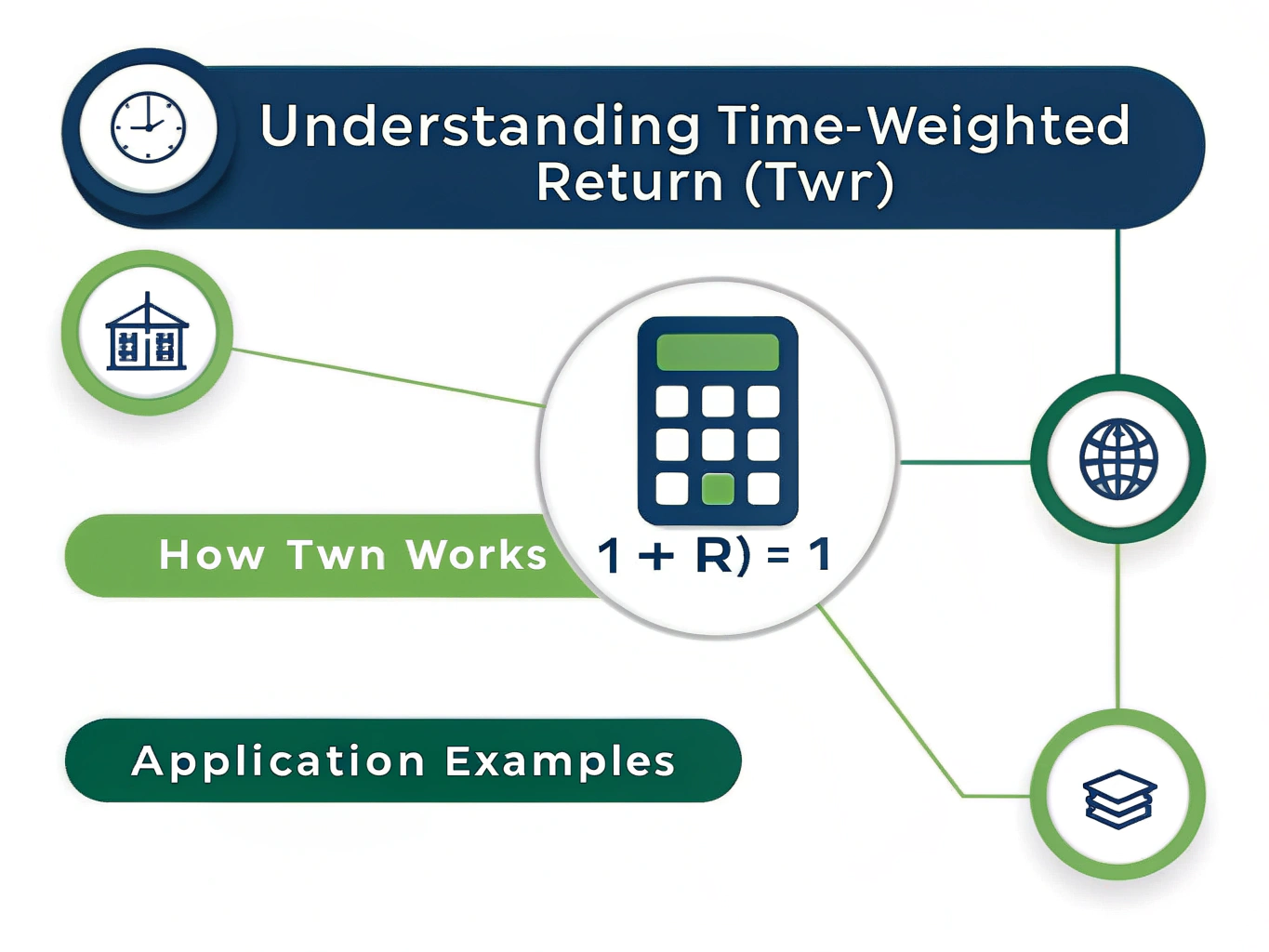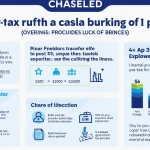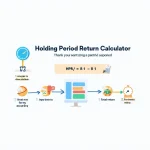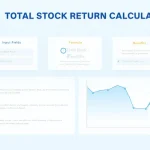Time-Weighted Return Calculator
Is this tool helpful?
How to Use the Time-Weighted Return Calculator Effectively
Using the Time-Weighted Return (TWR) Calculator is straightforward and requires just a few simple steps:
- Step 1: Enter the number of investment periods you want to analyze (between 1 and 100). For example, if you’re tracking quarterly returns for a year, enter 4.
- Step 2: Input the return percentage for each period. For instance:
- Period 1: 2.75%
- Period 2: -1.50%
- Period 3: 3.25%
- Period 4: 1.80%
- Step 3: Click the “Calculate TWR” button to get your time-weighted return result.
Understanding Time-Weighted Return Calculation
Time-Weighted Return is a sophisticated method for calculating investment portfolio performance that eliminates the impact of cash flows. The mathematical formula for TWR is:
$$ \text{TWR} = \prod_{i=1}^{n} (1 + R_i) – 1 $$Where:
- ∏ represents the geometric linking (multiplication) of returns
- n is the number of periods
- Ri is the return for period i
Benefits of Using Time-Weighted Return
- Eliminates the distortion caused by cash flows
- Provides a more accurate representation of portfolio management performance
- Enables fair comparison between different investment strategies
- Standardizes performance measurement across different time periods
- Facilitates benchmark comparison
Practical Applications of TWR Calculator
Portfolio Performance Analysis
Consider a portfolio manager analyzing quarterly returns for the past year:
- Q1: 3.45%
- Q2: -2.10%
- Q3: 4.20%
- Q4: 2.95%
Using the TWR calculator, the manager can determine the true performance regardless of when clients added or withdrew money.
Investment Strategy Comparison
When comparing two different investment strategies over multiple periods, TWR provides an unbiased view of performance. For example:
Strategy A:
- Month 1: 1.20%
- Month 2: 0.85%
- Month 3: 1.45%
Strategy B:
- Month 1: 0.95%
- Month 2: 1.30%
- Month 3: 1.25%
Real-World Use Cases
1. Investment Fund Evaluation
Investment funds use TWR to report performance to potential investors, as it provides a standardized way to compare different funds regardless of when investors enter or exit.
2. Personal Portfolio Tracking
Individual investors can use TWR to track their portfolio performance accurately, especially when making regular contributions or withdrawals.
3. Professional Performance Reporting
Financial advisors use TWR to demonstrate their investment management skills to clients, as it isolates their decision-making impact from client cash flow decisions.
Advanced TWR Applications
Multi-Year Performance Analysis
For longer-term analysis, investors might track annual returns:
- Year 1: 8.25%
- Year 2: -3.40%
- Year 3: 12.15%
- Year 4: 6.80%
- Year 5: 9.30%
Risk-Adjusted Performance Measurement
TWR can be combined with risk metrics to provide a more comprehensive view of investment performance.
Frequently Asked Questions
What is the difference between TWR and simple returns?
TWR accounts for the timing of cash flows and provides a more accurate measure of investment performance by geometrically linking periodic returns, while simple returns don’t consider the timing of cash flows.
When should I use TWR instead of other return measures?
Use TWR when you want to evaluate investment performance independent of the timing and size of cash flows, especially for portfolios with regular deposits or withdrawals.
Can TWR be negative?
Yes, TWR can be negative when the overall investment performance results in a loss. For example, if you have returns of -5%, 2%, and -3%, the TWR will be negative.
How often should I calculate TWR?
TWR can be calculated for any time period (daily, monthly, quarterly, or annually) depending on your investment monitoring needs and the frequency of cash flows.
Is TWR better than IRR (Internal Rate of Return)?
Neither is “better” – they serve different purposes. TWR is ideal for evaluating investment management performance, while IRR is better for understanding the actual return experienced by an investor including the impact of their cash flow timing.
Can I use TWR for comparing different investment strategies?
Yes, TWR is excellent for comparing different investment strategies as it eliminates the impact of cash flows, providing a fair comparison basis.
How does TWR handle portfolio rebalancing?
TWR treats portfolio rebalancing like any other period return, making it an ideal metric for portfolios that undergo regular rebalancing.
Is TWR used in professional investment management?
Yes, TWR is the industry standard for professional investment management reporting and is required by the Global Investment Performance Standards (GIPS).
Important Disclaimer
The calculations, results, and content provided by our tools are not guaranteed to be accurate, complete, or reliable. Users are responsible for verifying and interpreting the results. Our content and tools may contain errors, biases, or inconsistencies. We reserve the right to save inputs and outputs from our tools for the purposes of error debugging, bias identification, and performance improvement. External companies providing AI models used in our tools may also save and process data in accordance with their own policies. By using our tools, you consent to this data collection and processing. We reserve the right to limit the usage of our tools based on current usability factors. By using our tools, you acknowledge that you have read, understood, and agreed to this disclaimer. You accept the inherent risks and limitations associated with the use of our tools and services.







